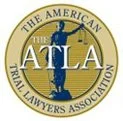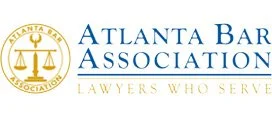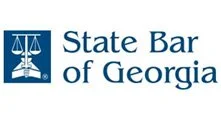Atlanta Construction Accident Attorney
Key Points:
- When injured in a Georgia construction accident or construction work site injury, you may be entitled to compensation from third-parties such as general contractors, delivery companies, equipment manufacturers, and other contruction companies; in addition to workers compensation benefits from your employer.
- Atlanta area and Georgia companies and contractors that provide or oversee heavy machinery or dangerous site operations, are responsible for falling objects or safety procedures may have responsibility, and may owe financial compensation, to workers injured at a job site.
- Violations of Georgia and industry rules and regulations from OSHA, may provide the evidence needed to prove the negligent acts that caused severe, life-altering accidents at your job site.
- Before simply settling for workers compensation benefits (which are limited in the State of Georgia), if your injury is severe or permanent, it may be best to consult a construction accident attorney to ensure no claims or potential defendants have been overlooked.
Table of Contents
Which Companies and Individuals Can be Held Responsible for Georgia Construction or Work Site Accidents and Injuries?
A surprising number of third-party companies can or may be responsible when a serious construction job site accident happens. Investigation of how and why a construction injury happened will often result in a finding that some person or company other than your employer or co-worker; such as a contractor or sub-contractor, delivery company, concrete company, electrician or electrical contractor, or other job site worker or company acted negligently to start the events that caused you to become injured.
In the construction industry, activities and responsibilities at construction sites change daily, and vary based on the specific role on the team. This can mean that responsibilities for risky activities such as operating heavy machinery, navigating extreme heights, and dealing with electrical lines can become a complex operation, waiting for an accident to happen.
The federal government and state and local regulators are aware of these risks, as are experienced industry operators and experts. Understanding and determining who was negligent and in what ways is the key to successfully proving the cause or a serious accident, to identifying the responsible companies and workers, and to making a financial recovery. Industry and governmental rules and regulations, such as those established by OSHA – the Occupational Safety and Health Administration – can be used to establish the safety rules and standards and whether they were followed or enforced.
What Financial Compensation May Be Available After a Georgia Construction Accident?
In addition to workers compensation benefits, should those be available from your employer, an injured worker may have what is known as a “third-party case,” which is a legal claim against a company, government, or person who is not employed by the same organization you work for, if they negligently caused your injury.
Financial damages that you may be entitled to recover include: Ambulance, emergency room and hospital bills made necessary by your injury; urgent care or primary care visits; orthopedic care and surgical care; physical therapy; future medical expenses; and past and future lost pay and earnings. The total amount of your damages may be calculated by a team of experts who specialize in valuing serious injury cases.
How Are Negligent Hazards at a Construction Site Proven Under Georia Law?
Construction sites are so fraught with hazards that OSHA actually has a group of them identified as the “Big 4”:
- FALLING HAZARDS: Falls from ladders, scaffolding, or boom trucks, or other significant heights, resulting in life-threatening or even fatal injuries are proven by investigating whether proper safety protocols were followed.
- ELECTRICAL SHOCKS, BURNS AND ELECTROCUTIONS: Working with generators, power tools, and electrical wiring carries with it risks of electrical shocks and flash burns. It is often determined that simple safety steps that were not followed lead to electrocution or severe burns.
- HEAVY EQUIPMENT: Improper training to use heavy machinery like bulldozers, backhoes, and cranes, or negligent maintenance of the equipment is the cause of many crush and impact incidents. Records of worker qualification and training and maintenance records should be quickly gathered and examined.
- VEHICLE MOVEMENT AND FALLING OBJECTS: Injuries commonly arise from visitors or workers being struck by moving objects or unsafe vehicle movements. Investigation of such incidents usually determines that the failure to follow a safety rule cause the injury to happen, such as failure to employ safety nets or to restrict persons or vehicles from an area at a critical moment.
What Claims May Exist When a Construction Company Injures a Worker in Georgia?
If a construction worker is injured by their own company, usually meaning the negligent act of a co-worker, a worker will have a workers compensation claim for medical in income benefits. In the case of any serious workers compensation injury, it is a good idea to consult with a workers compensation attorney due to the complex rules involved in the comp system.
In Georgia, when the construction company (or its worker) is not the same company or employer of the victim of negligent injury, this is known as a “third-party claim.” When a third-party claim exists the injured construction worker may have an injury case or claim against the at-fault company or business.
In some cases an injured worker may have both a workers compensation claim (if they were on the clock working when injured) and a third-party claim. A Georgia personal injury lawyer should be able to tell you whether one or both types of claims exist, and the relative strengths and weaknesses of each.
How Should My Georgia Construction Accident be Investigated?
Often construction injuries are investigated by government inspectors, such as OSHA agents, insurance company representatives, lawyers for the construction company – and experts hired by Atlanta personal injury law firms. Accident lawyers may hire private investigators, accident reconstruction experts, industry safety experts, photographers, or retired OSHA investigators to examine the accident scene to determine what happened.
Police and ambulance reports, OSHA investigative records, citations, surveillance video, and other evidence should be gathered and analyzed. Medical records and bills should also be obtained and preserved. Failure to start taking steps to preserve evidence may make proving what happened more difficult in the future.
When should a Work Site or Construction Accident Attorney be Hired?
Like everything else in life, a lawyer is not always needed. If an injury is minor, or in the case of a “near miss” where someone could have been hurt but wasn’t, while it is a good idea to talk with an attorney, you may or may not need to hire one. In a serious injury event, a construction accident lawyer may be able to hire experts to inspect and investigate the scene right away to preserve the evidence needed to make a full and fair recovery for your injury.
A construction accident Atlanta law firm will usually send a notice to the persons or companies responsible for causing the injury demanding and requiring that critical evidence be preserved before it can disappear. A lawyer can obtain an agreement to have the site inspected and, if necessary, preserved until an investigation is completed. Time can be of the essence when it comes to discovering and preserving the evidence you need. This can be one of the largest benefits of getting a lawyer involved early in the process.
What Types of Construction Sites Are Common Around Atlanta?
Construction is a mainstay of Atlanta, reflecting the economic growth and increasing population. As the skyline transforms and neighborhoods expand, the demand for new infrastructure and living spaces is ongoing. Various construction sites have become increasingly common across the region, catering to different development needs.
Here’s a look at some of the most prevalent types of construction projects you’ll find around Atlanta:
- Residential Construction: Developments include everything from single-family homes to expansive apartment complexes and high-rise condominiums, meeting the housing demands of Atlanta’s growing population.
- Commercial Construction: Atlanta’s commercial landscape is always evolving; this includes office buildings, retail centers, and luxury hotels, which are more prominent in areas like Midtown and Buckhead.
- Industrial Construction: On the city’s outskirts and near major transport hubs, you might notice the construction of warehouses and manufacturing facilities, which supports Atlanta’s role as a logistics and distribution powerhouse.
- Road and Infrastructure Projects: Atlanta’s infrastructure is consistently evolving with the needs of the area and regularly undertakes road construction, bridge repairs, and expansions to help reduce traffic issues.
- Public Works and Utilities: Since Atlanta is an urban area, public works and utilities projects are very common. They are crucial for urban living, including upgrades to water treatment facilities and sewer systems and expansions of public transportation networks like MARTA.
What Are Common Forms of Negligence at Georgia Construction Site Accidents?
While some are complete accidents beyond anyone’s control, some construction site accidents can be traced back to various forms of negligence:
- Construction sites typically require the use of protective equipment like hard hats, safety glasses, protective footwear, and safety harnesses. Unfortunately, some companies do not do a thorough job in enforcing safety measures, which can lead to serious injuries for their workers.
- Outdated or poorly maintained equipment can also pose a risk to workers. It’s important to not always just rely on the safety features built into the equipment, and to personally maintain ladders, power saws, and safety harnesses.
- Putting off maintenance for the actual worksite can also create hazards. This can include tripping risks around the site as well as risk of falling objects. Areas prone to spills or other dangers should be marked with warning signs to properly alert workers.
- Construction companies are always responsible for providing thorough and ongoing training on safety practices. A failure to do so constitutes negligence.
Unfortunately, the high costs of upholding safety standards can lead companies to cut corners, jeopardizing their workers’ safety. This issue is exacerbated when workers are put on tight deadlines, as safety oversights may occur due to the hurried nature of the work.
When Is a Third-Party Contractor or Business Responsible for a Georgia Construction Site Accident?
If there is an injury sustained while on the job, it is likely that your employer or a third party company may be liable. Responsibility for a construction site accident can extend to people like subcontractors and equipment manufacturers, depending on the nature of the accident. For example, an electrical or roofing contractor can be held accountable if they fail to maintain a safe environment or if safety equipment is defective. This type of negligence will typically be found in a thorough examination of the accident scene.
Liability can also extend to subcontractors or equipment manufacturers. This means that if a contractor failed to maintain a safe environment that ended up contributing to the accident, or if safety equipment provided was defective, they can potentially be held accountable for the incident.
What Types of Evidence Should be Prioritized at a Construction Site?
Here are some key forms of evidence to focus on:
- Gathering details from the accident from photos and videos can prove to be invaluable throughout an investigation. These visuals help to paint a picture of the environmental conditions and placement of the equipment, among other things that may have led to the accident.
- Testimony from witnesses can include people like coworkers, contractors, and even onlookers who saw the accident. They can help determine whether or not there was negligence or unsafe practices at the site of the incident.
- Accident reports can be prepared by the company, or even the emergency workers. They include details about the incident to help with claims.
- Reviewing the detailed medical records of the injuries will provide evidence of the physical outcome of the accident, linking them directly to the event.
- A look at the company’s historical safety protocols and incident records can reveal patterns of oversight or habitual safety failings.
- Equipment maintenance logs are an important resource to review, as they demonstrate whether or not the equipment has been serviced regularly. Poor maintenance of any heavy machinery can contribute to an accident.
- Training records proving the education and qualifications of personnel can help determine if insufficient training played a role in the accident.
- Proof of adherence to or violations of safety regulations, like those mandated by OSHA, can show whether the company met its legal safety obligations.

 1201 West Peachtree Street #2339 Atlanta, GA 30309+1-770-212-3795$0-$100000
1201 West Peachtree Street #2339 Atlanta, GA 30309+1-770-212-3795$0-$100000I called Millar Law Firm with a few legal questions and although I didn’t have a personal injury case, I am leaving five stars for the service I received. They took the time to listen to me and answer my questions thoroughly. Very professional and knowledgeable lawyers.

Can a Construction Worker Be Compensated Both From Workers Comp and a Thir-Party Work Injury Lawsuit?
Yes, a construction worker can be compensated from both workers’ compensation and a separate work injury lawsuit under certain conditions. Workers’ compensation provides benefits like medical expense coverage and partial wage replacement, regardless of who was at fault for an injury. This system usually prevents a worker from suing their employer directly.
However, if a third party—like an equipment manufacturer, delivery company, or another subcontractor—is responsible for the injury, the worker may have a claim or file a lawsuit against that party. For example, this means that if a faulty machine or tool causes an injury, the worker could claim workers’ compensation, and also sue the tool’s manufacturer. This allows injured workers to potentially receive more comprehensive compensation for their losses.















